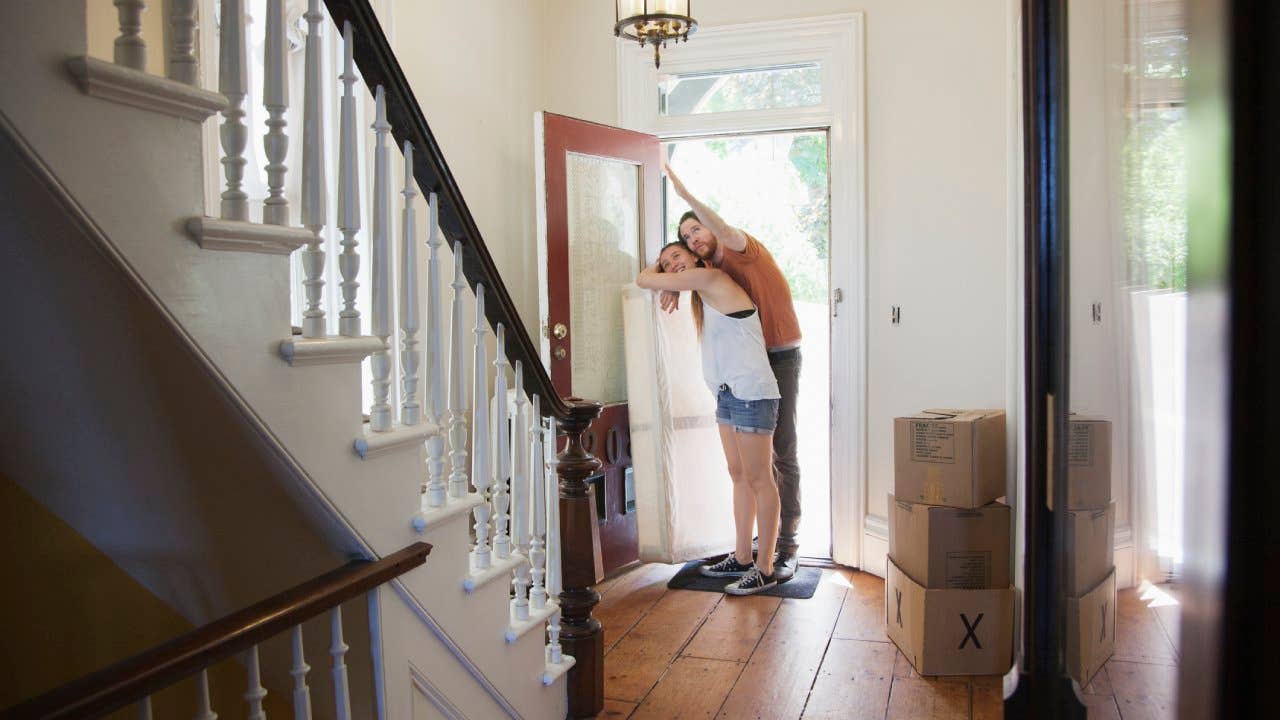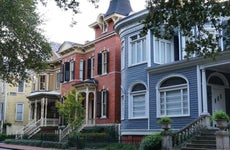
The Bankrate promise
At Bankrate we strive to help you make smarter financial decisions. While we adhere to strict , this post may contain references to products from our partners. Here's an explanation for .
Buying a home that’s more than 40 years old has a number of advantages. You’re more likely to find unique architectural details, vintage craftsmanship and potentially a more affordable price tag (especially if it’s a fixer-upper or selling “as is.”) The phrase “they don’t build ‘em like they used to,” may be a cliché, but it’s true.
Unfortunately, the period charm and fixtures don’t always go well with contemporary lifestyles. “Older homes often need more repairs and maintenance and have higher heating and cooling costs,” says Shaun Martin, owner and CEO of Denver Real Estate Solutions. “Additionally, older homes may not have features that are common in newer homes, such as central air conditioning.”
Even though they’re not dangerous (like the presence of lead paint or asbestos, which sellers have to disclose), dealing with these issues can be more time-consuming and expensive than you originally planned for. Whether you’re house hunting for a primary residence, a second home or an investment property, here are some common hidden problems of old homes that you should factor into your final offer or contract negotiations.
Wi-Fi problems
If you buy a historic home, know that strong, consistent connectivity might be challenging. Older houses (late 19th to mid-20th century) often have thick walls made of solid plaster, brick, lath or metal, all of which can interfere with the Wi-Fi and leave certain areas of the house without an internet connection. Even the foil-based insulation common in the 1950s and 1960s can cause interference. This can be a big problem if you or other family members plan to work remotely.
The solution? “You may need to purchase a stronger router or a range extender to address the issue,” says Kevin Bazazzadeh, real estate investor and founder of Brilliant Day Homes, a Houston house-buying firm. “You can also try moving the router to a central location in the house, away from obstructions.” Or be prepared to spring for the latest in cable or fiber-optic networks.
Non-standard window sizes
In most modern homes, the standard window size is two feet wide by three feet tall. But it’s common in older homes to see windows that are much bigger or much smaller than that. For example, many Victorian homes have sash windows, which can be up to four feet in width.
If you buy an older home that has non-standard windows, it can be hard to find shades or blinds that fit. The best solution here is to get custom-fitted window treatments that match the dimensions of the windows. Custom shades and blinds will be more expensive than standard, off-the-shelf ones — often, double the cost. So factor that into your budget.
If the windows are in bad shape and need replacing, you might consider installing standard-size windows to make your life easier (and potentially improve the resale value of the home — since, odds are, a new buyer wouldn’t want the extra expense for customized treatments any more than you did).
Issues with central AC installation
Depending on where you live, having central air conditioning is a must-have. However, you won’t find many historic homes that already have central air conditioning (or any type of cooling system, for that matter). Many old homes used awnings, ceiling fans, strategically placed windows and those aforementioned thick walls to keep the house from getting too warm.
Unless you find an older house that has an existing forced-air heating system, you’ll need to install ducts throughout the home to get central air conditioning, which is a big (and expensive) project. Retrofitting central air conditioning in an old house can cost upwards of $10,000.
If a central air conditioning system isn’t in your renovation budget, you can also think about installing mini split systems in rooms where you spend the most time, or use window units (depending on the size of the windows).
Heating difficulties
Old houses are notoriously hard to heat. Overtime, cracks around windows and doors can bring cold air inside, and existing insulation can break down and become less effective. Many old houses relied on fireplaces or wood-burning stoves for heat in the winter, which may not be the most convenient option for homeowners today.
According to Bazazzadeh, one of the most cost-effective ways to heat an older home is to install new insulation. This can be a considerable project, depending on the sort you choose, but in general, the cost of adding insulation to existing walls is $1.75 to $7.50 a square foot, according to Fixr.com; projects can range from $3,000-$7,000 total. He also suggests sealing or weather-stripping your windows and doors to prevent drafts.
“Another idea is to set up a programmable thermostat, which will allow you to set the temperature when you are home and away, so you’re not wasting energy heating an empty house,” he adds.
If you like the ambiance of a fireplace but don’t want to deal with wood storage (and potential smoke inhalation), consider adding an electric fireplace during the renovation. “Electric fireplaces are relatively inexpensive to purchase and install, and they can efficiently heat the room,” says Martin.
Unreliable wiring
Most homes that were built more than 40 years ago have working electricity. But depending on the era of the home, it might be a knob-and-tube system. Although knob-and-tube wiring meets modern-day electrical codes, it’s probably not the best electrical system to support all the appliances and devices that are used in a modern home.
For example, if you have eight appliances in your kitchen, space heaters in every room, a standard efficiency dryer and a movie-theater sound system in the living space, a knob-and-tube wiring system could be susceptible to blackouts and brownouts. When the electrical outlets are overloaded, it can also increase the risk of a fire.
If you’re planning to renovate an older home, you might decide to remove the knob-and-tube system and replace it with a more efficient electrical system that can withstand a higher load. But this is one of the more expensive renovation projects — expect it to cost at least a few thousand dollars.
Specialty materials and craftsmanship
One of the biggest draws of an older home is the unique style and character that you don’t find in newer homes. Victorian houses, for example, were often built with turrets and widow’s walks. Greek Revival homes are known for their signature columns that mimicked the architecture of the Parthenon.
If you want to preserve the unique features of a historic home, keep in mind that finding the right workers and the right building materials can be challenging. For example, if you purchase a home with large columns that are starting to crumble, your average local contractor might not be willing to take on the project. Plus, paying for someone to manufacture a replacement column could be pretty expensive.
Even if you’re not doing work that’s so extensive, you might have to find a specialist in historic home restoration, and be prepared for repairs to take longer. Matching materials and finishes could be tough, and you might have to completely re-do something, rather than be left with a patchy look.
Final word on old home hassles
The hidden problems of old homes aren’t vital to fix. But if you do encounter them, bear in mind that they could boost the cost of any renovation or moving-in budget, and result in higher ongoing expenses as well.
Before you bid, ask the seller (or their real estate agent) directly about any of these issues. Consider them and factor into your offer on the home. If you do go to contract, consider making provisions for them in any contingency clause, and make sure some of these things get checked out in the inspection. If it does turn out that a big expense is looming, like the need for new insulation, maybe the seller can finance it. And, at the closing, furnish the business cards of some good contractors as well. Just in case.
Related Articles



